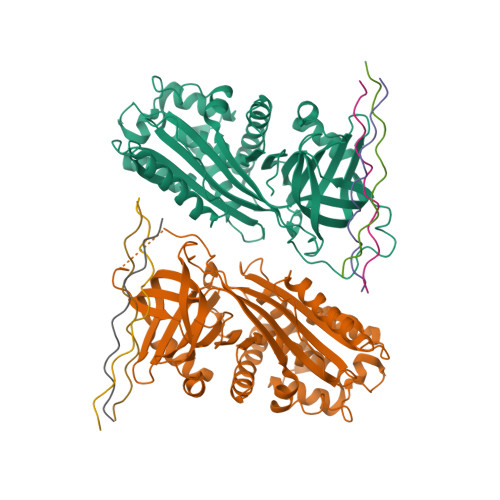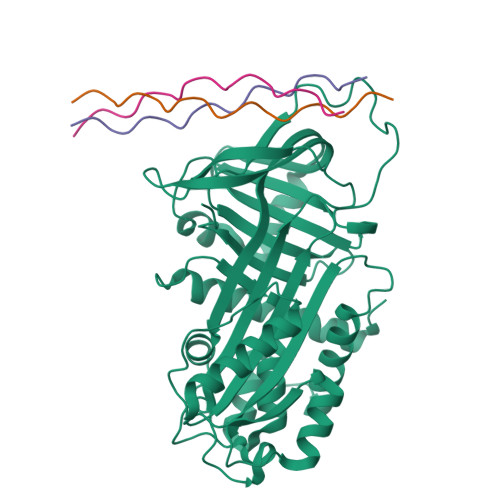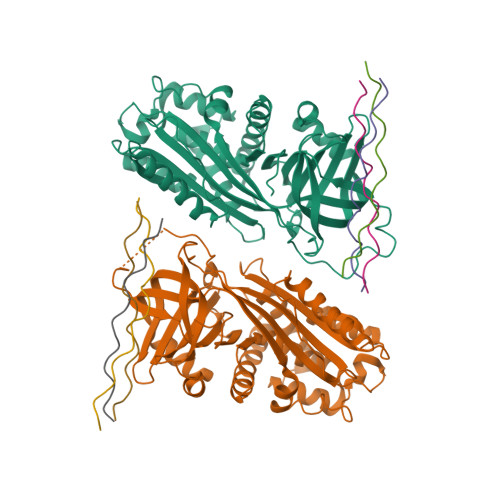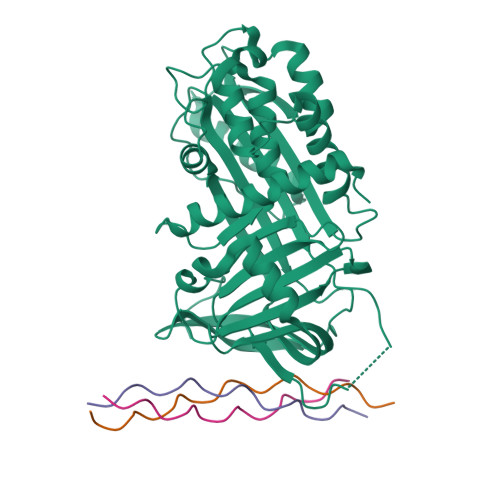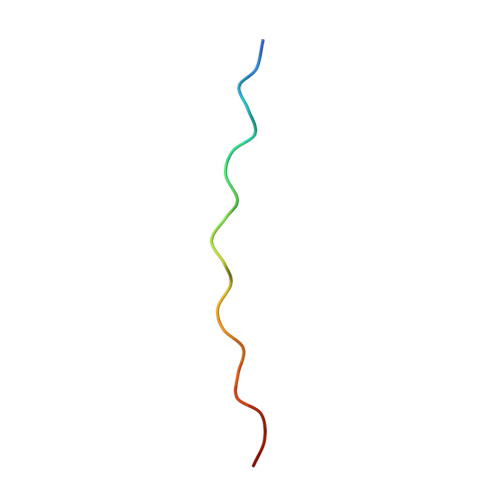Collagen's primary structure determines collagen:HSP47 complex stoichiometry.
Abraham, E.T., Oecal, S., Morgelin, M., Schmid, P.W.N., Buchner, J., Baumann, U., Gebauer, J.M.(2021) J Biological Chem 297: 101169-101169
- PubMed: 34487762
- DOI: https://doi.org/10.1016/j.jbc.2021.101169
- Primary Citation of Related Structures:
7BDU, 7BEE, 7BFI - PubMed Abstract:
Collagens play important roles in development and homeostasis in most higher organisms. In order to function, collagens require the specific chaperone HSP47 for proper folding and secretion. HSP47 is known to bind to the collagen triple helix, but the exact positions and numbers of binding sites are not clear. Here, we employed a collagen II peptide library to characterize high-affinity binding sites for HSP47. We show that many previously predicted binding sites have very low affinities due to the presence of a negatively charged amino acid in the binding motif. In contrast, large hydrophobic amino acids such as phenylalanine at certain positions in the collagen sequence increase binding strength. For further characterization, we determined two crystal structures of HSP47 bound to peptides containing phenylalanine or leucine. These structures deviate significantly from previously published ones in which different collagen sequences were used. They reveal local conformational rearrangements of HSP47 at the binding site to accommodate the large hydrophobic side chain from the middle strand of the collagen triple helix and, most surprisingly, possess an altered binding stoichiometry in the form of a 1:1 complex. This altered stoichiometry is explained by steric collisions with the second HSP47 molecule present in all structures determined thus far caused by the newly introduced large hydrophobic residue placed on the trailing strand. This exemplifies the importance of considering all three sites of homotrimeric collagen as independent interaction surfaces and may provide insight into the formation of higher oligomeric complexes at promiscuous collagen-binding sites.
Organizational Affiliation:
Faculty of Mathematics and Natural Sciences, Institute of Biochemistry, University of Cologne, Cologne, Germany.








